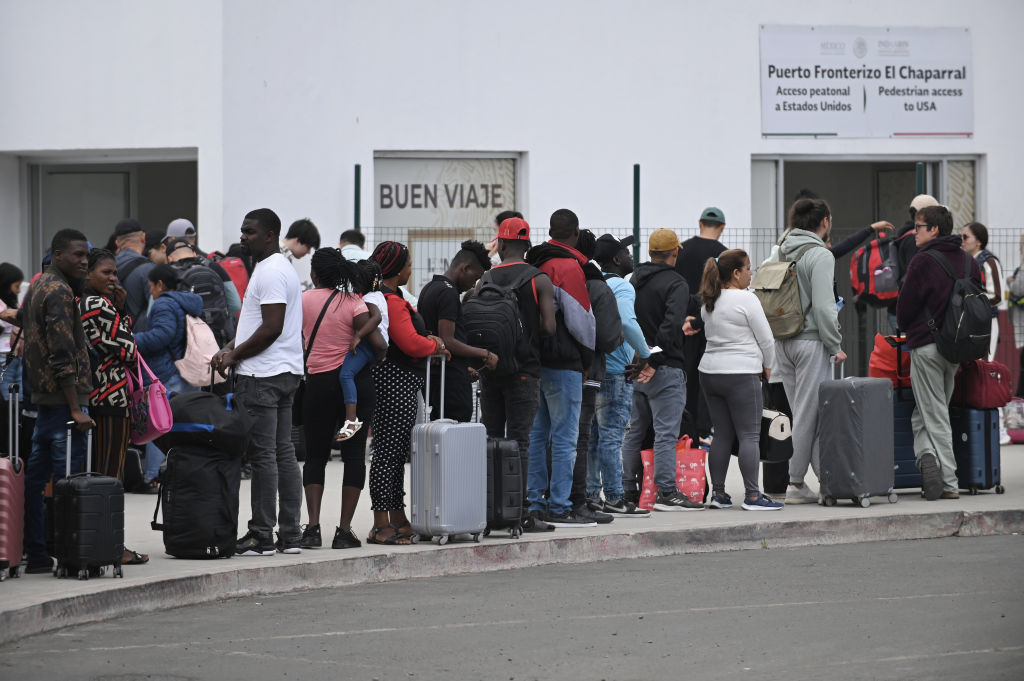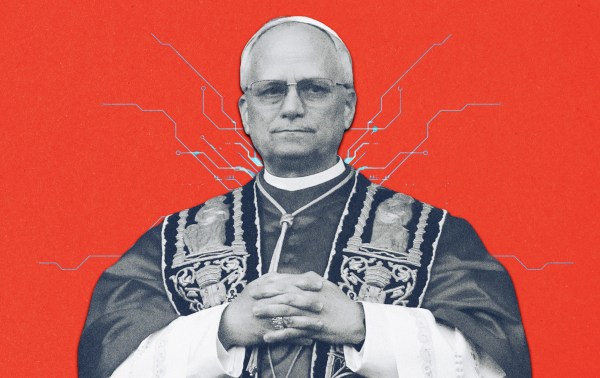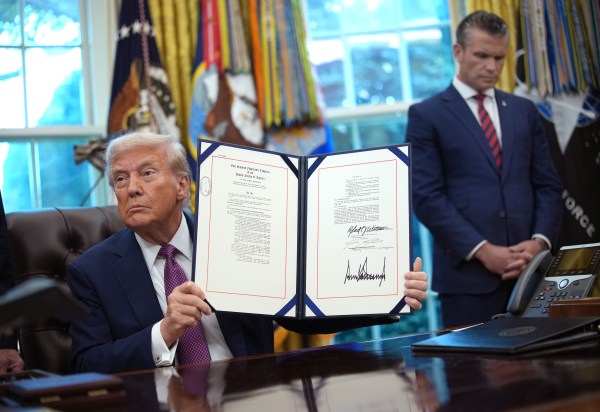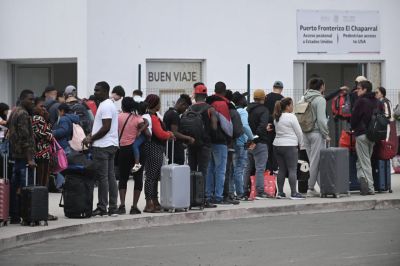On the heels of the expiration of Title 42, the Biden administration has released its most comprehensive plans yet on how to manage the influx of migration at the U.S.-Mexico border: a multi-pronged approach to process more immigrant and refugee applications south of the U.S. border.
It relies on both carrots and sticks. One of the carrots—designed to incentivize people to not make the dangerous trek over land to the north but rather to apply for refuge closer to the place they are fleeing—is a commitment to establish regional processing centers in Latin America.
But the administration also resurrected a big and controversial stick: vowing to turn back migrants who reach the U.S.-Mexico border if they fail to seek asylum in a country they are transiting through or use other legal options to seek entry into the United States. Under the Trump administration, that policy was called the “transit ban.”
The success of Biden’s strategies—both in creating safer pathways for migrants and in deterring them from coming to the border at all—will depend on the United States’ partnership with certain Latin American countries.
The carrot.
The first regional processing centers will open in Colombia and Guatemala, two countries migrants often transit through. The administration plans to “scale up” with other locations in South and Central America, Homeland Security Secretary Alejandro Mayorkas said in a press conference. Additional locations under consideration include Ecuador and Costa Rica, Politico reported.
“The whole model is to reach the people where they are, to cut the smugglers out, and to have them avoid the perilous journey,” Mayorkas said. The administration said it expects to screen up to 6,000 migrants a month at the centers.
The regional processing centers will help applicants determine whether they are eligible to enter the United States through a legal pathway. Migrants will request appointments on their phones, and eligible migrants can be referred to refugee resettlement, humanitarian parole, family reunification, or pathways that allow migrants to come work in the United States with labor visas.
This plan could help prevent migrants from taking the dangerous trek northward and relying on cartel-backed human smugglers, known as coyotes, for passage.
The administration plans to open more than 100 centers, though it has offered no details yet about a timeline. The centers will have U.S. immigration officials working in partnership with representatives of international organizations like the U.N. High Commissioner for Refugees (UNHCR) and the International Organization for Migration (IOM) on staff. Canada and Spain will also take referrals from the centers.
“It’s basically a place for people, without getting all the way to the U.S.-Mexico border, to have someone explain to them their eligibility, not just for asylum, but potentially for a number of migration opportunities,” Matthew Soerens, U.S. director of church mobilization for refugee agency World Relief, said.
“If this strategy succeeds, it could eventually help return the U.S. immigration policy debate to a more balanced consideration of future workforce needs and provision of legal status to those immigrants already living in the country without it,” Andrew Selee, president of the nonpartisan Migration Policy Institute, wrote in an analysis of the regional processing centers plan.
The stick.
The administration is also stepping up its deterrence strategies, particularly for migrants not from Mexico who pass through multiple countries en route to the United States.
“We are making it very clear that our border is not open, that crossing irregularly is against the law,” Mayorkas said.
Enter the transit ban, or, as the Biden administration prefers, the Circumvention of Lawful Pathways rule.
The Biden administration has tried to make the case that its ban is not the same as Trump’s because it’s accompanied by a limited expansion of asylum to go along with the restrictions. The administration will allow up to 30,000 Haitians, Nicaraguans, Cubans per month to request humanitarian parole while in their home countries, provided they have a passport and someone in the United States willing to sponsor them. The administration already implemented a similar process for Venezuelans in late 2022, and Venezuelans will be included in the 30,000 number.
But the rule will bar most migrants from asylum should they cross the border illegally and if they have not sought refuge in another country first. (Children, those with medical emergencies, and Mexican nationals—who don’t transit through a third country en route to the border—are exempt.) And those countries likely can’t absorb the expected influx of migrants—immigration experts note that the asylum systems in Mexico and the Northern Triangle countries (El Salvador, Guatemala and Honduras) are even less equipped than the United States.
“The asylum systems in these countries are a complete mess,” Arturo Castellanos-Canales, policy and advocacy manager with the National Immigration Forum.
So what does it look like for migrants on the journey to the United States to request asylum elsewhere?
The Northern Triangle.
Many of the affected migrants would be traveling through Northern Triangle countries which, immigration experts noted, historically have not offered robust refugee protections. El Salvador, Guatemala, and Honduras are plagued by high levels of violence, corruption, and poverty, with an estimated 377,000 people fleeing those countries annually from 2018 to 2021. It’s worth noting that conditions may be improving in at least one of these countries—murders in El Salvador dropped drastically in half last year due to a government-led crackdown on gang violence. All three grant the right to seek asylum, but their lack of tangible infrastructure for asylum seekers has meant that they rely on international organizations for helping migrants.
Mexico.
Mexico historically has been more a place of transit for would-be asylum seekers, but from 2014 to 2022 it recorded a 9,000 percent increase in asylum applications. It now ranks third globally in terms of the number of asylum applications it receives. It received 111,247 applications in 2022 alone.
The influx prompted the government to improve its laws, which Castellanos-Canales calls “among the most inclusive and protective of asylum seekers” in the world.
Acquiring refugee status in Mexico is straightforward: Travel to the country, apply to the Mexican Commission for Refugee Help (COMAR), and wait for a case to be resolved within 45 days. Applicants must demonstrate a reasonable fear of persecution, imprisonment, or torture because of protected categories including race, religion, nationality, gender, among others. Applicants have an opportunity to appeal adverse decisions.
But what looks good in theory falls short in practice, thanks to economic and demographic challenges as well as an epidemic of gang violence that creates conditions similar to what many migrants are fleeing in other Latin American countries. COMAR is underfunded, leading to a huge backlog: COMAR has begun to take up to 100 days to resolve cases with only 10 COMAR locations in the country.
Costa Rica.
Costa Rica has of late become something of a regional haven for refugees, currently hosting more than 233,000 people. But it’s stretched on resources and infrastructure for processing refugees.
In the last two fiscal years, Costa Rica has ranked among the top four countries in the world for individual asylum-seeker registrations, creating backlogs and individual cases that take more than a decade to resolve. Applicants can apply for asylum at ports of entry or before the country’s refugee commission within a month after entering the country and must demonstrate a reasonable fear of persecution based on certain protected identities.
Colombia.
Colombia is shedding members of its own citizenry because of violence and instability, yet more than 2.5 million Venezuelans have fled there. The Colombian government has responded by setting up temporary protections for Venezuelans, separate from asylum protections.
The country has signed onto international humanitarian agreements that would give asylum to those seeking it. The country’s Ministry of Foreign Affairs oversees the asylum process; there is no statutory requirement for cases to be adjudicated within a certain period.
But armed conflict in the country and natural disasters have also led to massive internal displacement among its own citizenry: There are more than 4.7 million internally displaced persons in Colombia, making it one of the highest world (treading Ukraine, Syria, and the Democratic Republic of Congo), according to the Internal Displacement Monitoring Center’s 2023 report.
The United States.
Meanwhile, Soerens and other immigration analysts said they expect migrants to still aim for coming to the United States, though it also faces challenges in immigration processing.
The administration has added more than 200 immigration judges since 2021 but still faces a backlog of more than 2 million cases, according to Syracuse University’s Transactional Records Access Clearinghouse (TRAC).
Hence, U.S. immigration authorities often release migrants into the United States, with instructions to show up at a court date that is often years in the future. The average immigration case takes four years to adjudicate.
Presidents from both parties have found themselves increasingly using administrative policy to deal with illegal immigration. Trump and Biden both relied on Title 42 to quickly expel migrants who crossed illegally into the United States without adjudicating their asylum claims. This led to an inflated number of border crossings (due to repeat crossings) but it also permitted the administration to keep migrants in Mexico or their home countries expeditiously.
The administration is now relying on Title 8, standard immigration procedure that gives migrants a right to their asylum claims being heard prior to expulsion. But it also beefs up penalties for recidivism: Migrants who are not found eligible for asylum are banned for a five-year period from making an attempt again.
Castellanos-Canales predicted the recent policy changes won’t stand up as a long term solution: “This is something that is just delaying a problem but it won't stop the movement of people north,” he said. “Having these regional processing centers might help to solve this problem but it's just a temporary solution. It's a band aid to a problem that requires a larger surgery.”






Please note that we at The Dispatch hold ourselves, our work, and our commenters to a higher standard than other places on the internet. We welcome comments that foster genuine debate or discussion—including comments critical of us or our work—but responses that include ad hominem attacks on fellow Dispatch members or are intended to stoke fear and anger may be moderated.
With your membership, you only have the ability to comment on The Morning Dispatch articles. Consider upgrading to join the conversation everywhere.